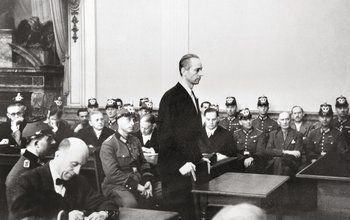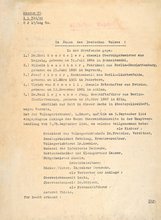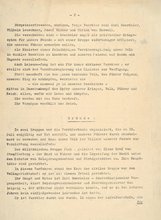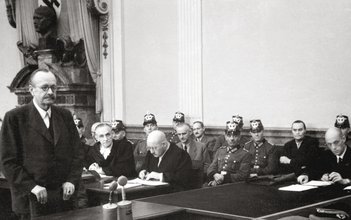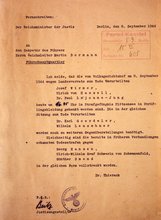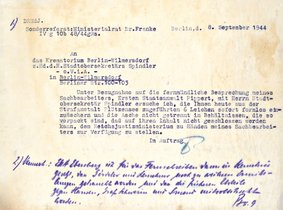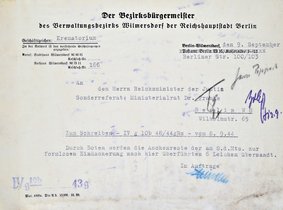The attempted coup of July 20, 1944, is the key event of the resistance against National Socialism. After long preparations by civilian and military circles, in early July of 1944, Claus Schenk Graf von Stauffenberg decided—despite his severe injury and his key role in Berlin—to venture an attempt on Hitler’s life. On July 20, 1944, he managed to smuggle a bomb into the closely guarded “Wolf’s Lair Führer Headquarters” near Rastenburg in East Prussia, and to detonate it during a briefing. Stauffenberg was able to leave the “Führer Headquarters” and fly back to Berlin.
After the failure of the coup, Stauffenberg, his adjutant Werner von Haeften, Albrecht Ritter Mertz von Quirnheim, and Friedrich Olbricht were executed by shooting in the Army High Command courtyard that same night, on the orders of Colonel General Friedrich Fromm.
On Hitler’s command, an army “court of honor” expelled the Wehrmacht officers involved in the attempted coup. That meant they could be sentenced by the “People’s Court” rather than the Reich Court Martial, which would otherwise have been responsible for their cases.
A series of more than 55 trials began, which ended with over a hundred death sentences. From October 1944, these sentences were also issued for people who had supported those involved in the coup or had helped them escape.
The first trial—against Field Marshall Erwin von Witzleben, First Lieutenant Peter Graf Yorck von Wartenburg, Colonel General Erich Hoepner, Lieutenant General Paul von Hase, Major General Hellmuth Stieff, Captain Karl Friedrich Klausing, Lieutenant Colonel Robert Bernardis, and First Lieutenant Albrecht von Hagen—was held as early as August 7 and 8, 1944, and ended with death sentences for all defendants. The government-controlled press reported in detail on the first trial, printing passages of the proceedings word for word.
The condemned men were hanged that same day in Plötzensee prison. Some of them were able to receive religious solace from the prison chaplains Harald Poelchau and Peter Buchholz.
On September 7 and 8, 1944, the civilian participants in the attempted coup were sentenced to death: Carl Friedrich Goerdeler, Wilhelm Leuschner, Josef Wirmer, Ulrich von Hassell, and Paul Lejeune-Jung.
Roland Freisler, the presiding judge at the “People’s Court,” held most of the trials himself. The surviving film, photographic, and audio documents give an impression of his hate-filled conduct of the proceedings. The defendants could not choose their own lawyers; they and their court-appointed lawyers were granted access to their indictments only shortly before the trial.
The prisoners hanged for their involvement in the coup of July 20, 1944, were taken to Wilmersdorf crematorium and cremated there. Only one day later, a crematorium worker took the remaining ashes to the Reich Ministry of Justice on Wilhelmstraße in a discreet cardboard box. It is not known what happened to them after that.
In total, 89 people who can be considered part of the July 20, 1944 resistance circles or who supported them were murdered in Plötzensee between August 8, 1944, and April 9, 1945.

